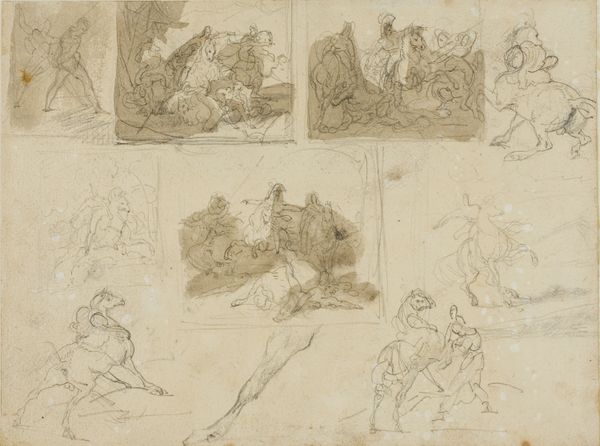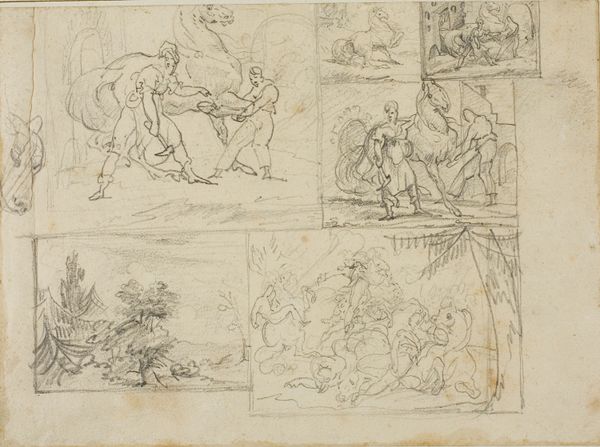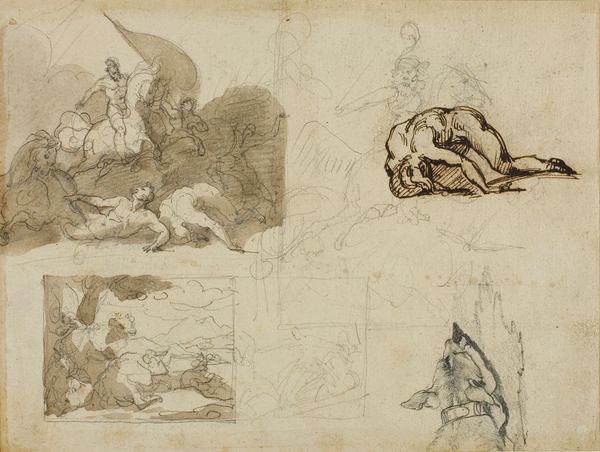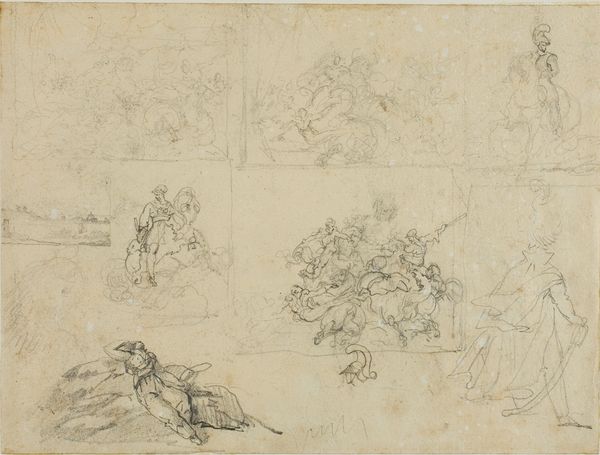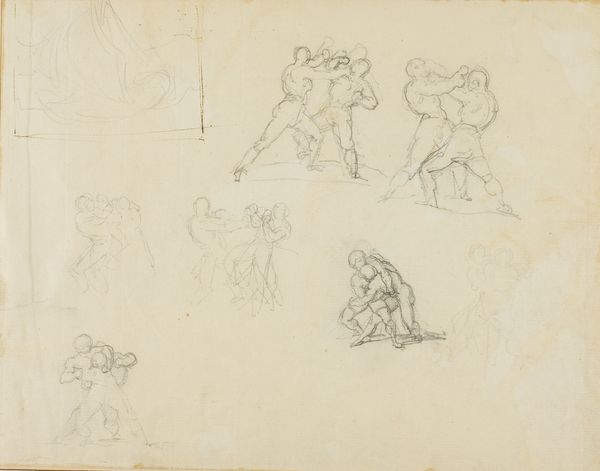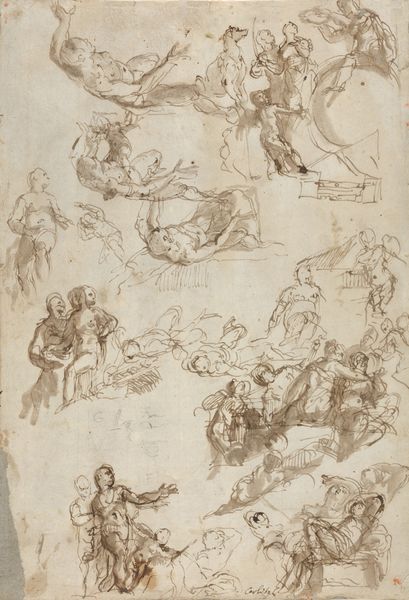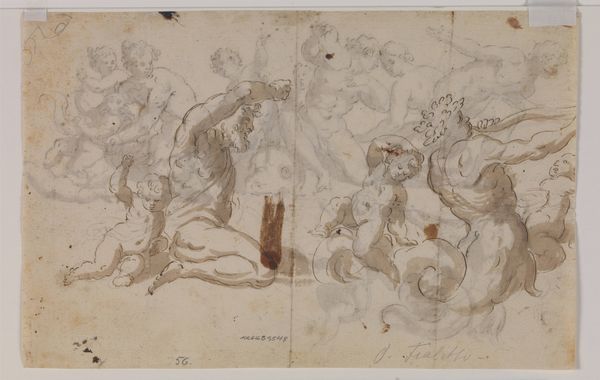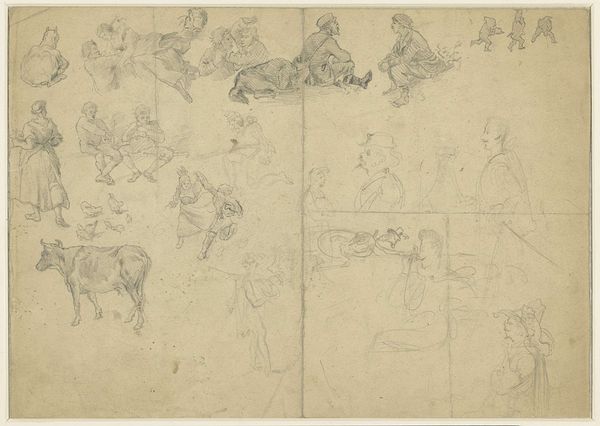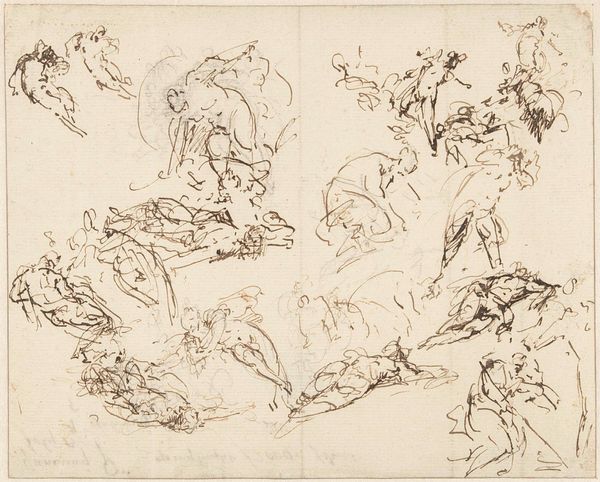
Sketches of a Cavalry Battle and the Forepaws of a Dog 1813 - 1814
0:00
0:00
drawing, paper, graphite
#
drawing
#
landscape
#
paper
#
romanticism
#
graphite
#
history-painting
Dimensions: 173 × 231 mm
Copyright: Public Domain
Curator: Alright, so before us we have Théodore Géricault's "Sketches of a Cavalry Battle and the Forepaws of a Dog", dating from around 1813-1814. He worked this out with graphite on paper. What are your first impressions? Editor: Energy. Pure, frantic energy. It feels like a whirlwind of limbs and dust. The scale isn't immediately grand, but the intensity makes it feel larger somehow. Curator: Absolutely. Géricault was wrestling with something immense, you can feel that even in these preparatory sketches. And knowing he was fascinated by horses, that 'forepaws of a dog' piece in the corner gives you a glimpse into the kind of intense observation he was bringing to animal anatomy in general, you know, almost playful when divorced from these epic scenes. Editor: I find it interesting how he segmented the page. It’s almost like looking at storyboards or initial drafts. Thinking about production, one cannot avoid considering paper—such humble material used in academic context by Gericault. I want to know more about its fiber, watermark and, thus, its accessibility during Napoleonic wars. Was he hoarding precious resources? Did this drawing survive because of the qualities of the material it’s executed in? Curator: That’s a fascinating point, connecting material access to artistic practice. I mean, consider Géricault was actively exploring themes of war, ambition and its consequence, human frailty at all levels. He doesn't idolize the materials for art making itself - the point of these sheets lies elsewhere, you see? And while his large paintings are really meant for public displays of artifice and technique, this sketchbook page whispers intimate struggles, like notes scribbled during a thunderstorm. Editor: Indeed, and by focusing our discussion on Géricault’s intentional artistic vision alone, it does mean overlooking how the physical and economic contexts actually allowed and enabled it, or the role these 'lesser' sketches may have in valorising the 'high art'. Did access to materials dictate the compositions we are witnessing today? It certainly provides an entry point to ask broader questions about the relationship between the artist, and the production circumstances—that is if we look past romantic idealisations of solitary genius! Curator: Of course, yes! Considering the physical origins opens the doors to different questions than the traditional “genius vision” take. It highlights a web of conditions of labour and resources necessary for this sketch and perhaps, allows us to glimpse the less heroic, maybe much messier background story behind Géricault’s grand Romantic vision. So much is being unearthed if we follow both threads together… Editor: Indeed.
Comments
No comments
Be the first to comment and join the conversation on the ultimate creative platform.
